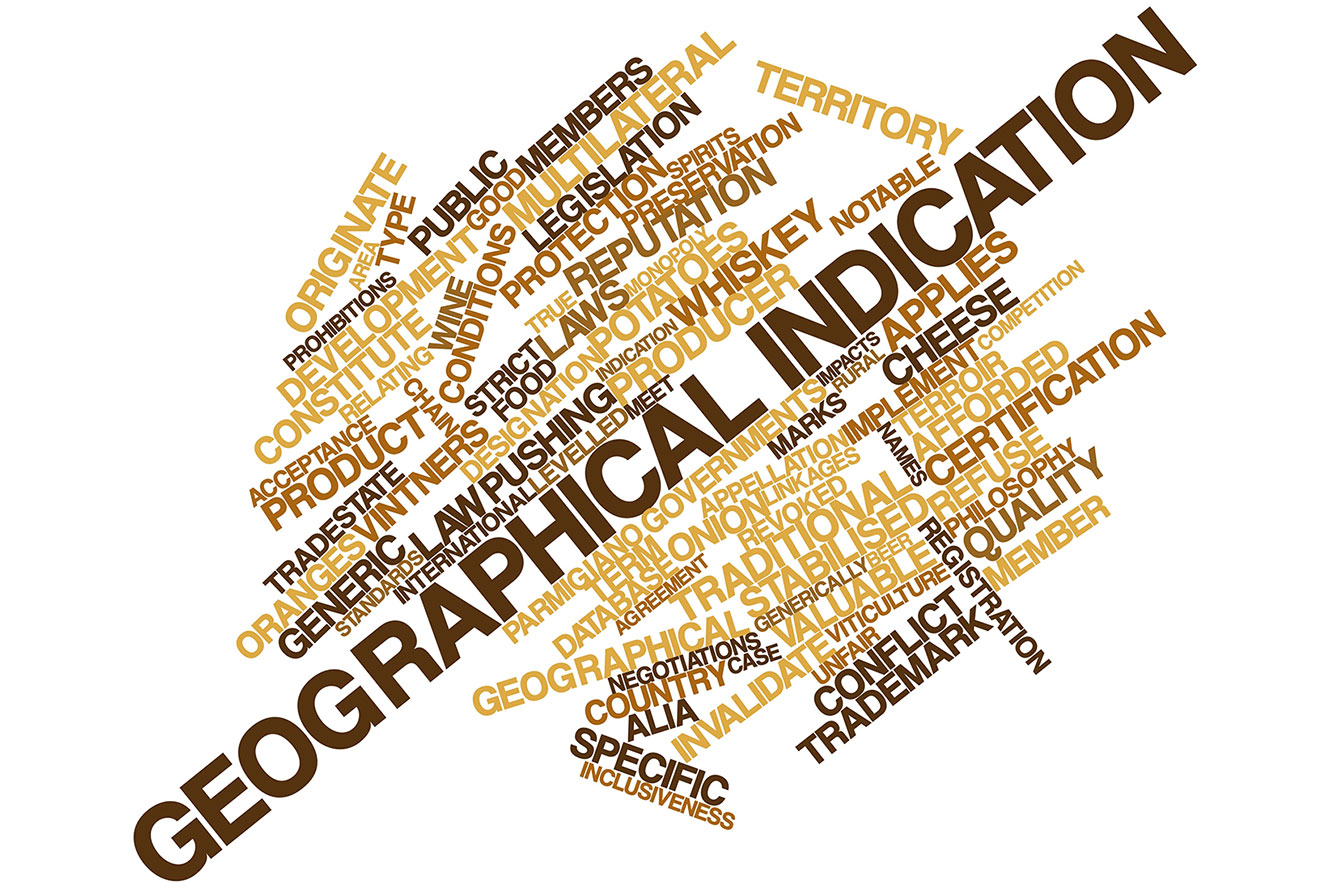
Geographical indications
A geographical indication is a sign used on products that have a specific geographic origin and possess qualities or a reputation due to that origin.
Consumers purchasing products with geographical indications want to know that the goods actually come from the specified location and comply with the relevant standards. Therefore, in order to protect their valuable reputation, controls must be in place regarding the use of geographical indications.
There are various laws and recognition systems in place for the protection of geographical indications; thus, international law is developing ways to enhance protection across national borders.

Different types of geographical indications
For a sign to function as a geographical indication, it must identify a product as originating from a specific location, and the quality, characteristics, or reputation of the product must essentially be due to that place of origin.
This often applies to agricultural products, as they are influenced by the local climate and environment, but geographical indications may also be used for industrial products that have a strong tradition and reputation for production in that particular area, such as Swiss watches.
Naming of origin is a type of geographical indication. In some jurisdictions, naming of origin is more strongly protected than other geographical indications.

Protection of geographical indications
There are three main ways to protect a geographical indication:
Through special laws concerning geographical indications (so-called unique systems).
Using collective marks or certification marks.
Methods focused on commercial practices, including administrative product certification schemes.
Countries often use more than one of these approaches, and different approaches may vary regarding important issues such as the conditions of protection or the scope of protection.
However, unique systems and collective systems or certification marks are similar in that both regulate collective rights for use by those who comply with defined standards.
Essentially, such rights allow legitimate producers (those whose products come from the designated area and meet the relevant standards) to use the law to prevent the use of a geographical indication on goods produced elsewhere or with different standards.

Geographical indications and trademarks
In some respects, geographical rights are similar to trademarks. Rights holders can prevent infringement of geographical indications, and this right may potentially last forever (although periodic re-registration of collective marks or certifications may be required).
However, there are also significant differences between these two types of signs. A trademark is used by a company to distinguish its goods and services from those produced by others, and the owner can prevent others from using the trademark. Additionally, a trademark can be sold or licensed.

International protection
A geographical indication guarantees consumers that a product is produced in a specific location and possesses certain characteristics related to that place of origin. It can be used by all producers in the relevant area who produce goods that have specific characteristics related to that location and cannot change ownership.
Like other types of IP, international rights have been developed to complement and enhance the protections offered in various national and regional jurisdictions. The international recognition of origin naming and “source signs” dates back to the Paris Convention of 1883. Recently, the TRIPS agreement on aspects related to trade in intellectual property includes some additional provisions to prevent misuse of GIs. Additionally, WIPO administers the Lisbon International System. The Geneva Act of the Lisbon Agreement on Appellations of Origin and Geographical Indications, adopted in 2015, expanded the system to allow for the registration of other geographical indications internationally.
